Choosing a Gaming CPU: Single + Multi-GPU at 1440p, April 2013
by Ian Cutress on May 8, 2013 10:00 AM ESTCPUs, GPUs, Motherboards, and Memory
For an article like this, getting a range of CPUs, which includes the most common and popular, is very important. I have been at AnandTech for just over two years now, and in that time we have had Sandy Bridge, Llano, Bulldozer, Sandy Bridge-E, Ivy Bridge, Trinity and Vishera, of which I tend to get supplied the top end processors of each generation for testing. (As a motherboard reviewer, it is important to make the motherboard the limiting factor.) A lot of users have jumped to one of these platforms, although a large number are still on Wolfdale (Core2), Nehalem, Westmere, Phenom II (Thuban/Zosma/Deneb) or Athlon II.
I have attempted to pool all my AnandTech resources, contacts, and personal resources together to get a good spread of the current ecosystem, with more focus on the modern end of the spectrum. It is worth noting that a multi-GPU user is more likely to have the top line Ivy Bridge, Vishera or Sandy Bridge-E CPU, as well as a top range motherboard, rather than an old Wolfdale. Nevertheless, we will see how they perform. There are a few obvious CPU omissions that I could not obtain for this first review which will hopefully be remedied over time in our next update.
The CPUs
My criteria for obtaining CPUs was to use at least one from the most recent architectures, as well as a range of cores/modules/threads/speeds. The basic list as it stands is:
AMD |
|||||||
| Name |
Platform / Architecture |
Socket |
Cores / Modules (Threads) |
Speed | Turbo | L2/L3 Cache | |
|---|---|---|---|---|---|---|---|
| A6-3650 | Llano | FM1 | 4 (4) | 2600 | N/A | 4 MB / None | |
| A8-3850 | Llano | FM1 | 4 (4) | 2900 | N/A | 4 MB / None | |
| A8-5600K | Trinity | FM2 | 2 (4) | 3600 | 3900 | 4 MB / None | |
| A10-5800K | Trinity | FM2 | 2 (4) | 3800 | 4200 | 4 MB / None | |
| Phenom II X2-555 BE | Callisto K10 | AM3 | 2 (2) | 3200 | N/A | 1 MB / 6 MB | |
| Phenom II X4-960T | Zosma K10 | AM3 | 4 (4) | 3200 | N/A | 2 MB / 6 MB | |
| Phenom II X6-1100T | Thuban K10 | AM3 | 6 (6) | 3300 | 3700 | 3 MB / 6 MB | |
| FX-8150 | Bulldozer | AM3+ | 4 (8) | 3600 | 4200 | 8 MB / 8 MB | |
| FX-8350 | Piledriver | AM3+ | 4 (8) | 4000 | 4200 | 8 MB / 8 MB | |
Intel |
|||||||
| Name | Architecture | Socket |
Cores (Threads) |
Speed | Turbo | L2/L3 Cache | |
| E6400 | Conroe | 775 | 2 (2) | 2133 | N/A | 2 MB / None | |
| E6700 | Conroe | 775 | 2 (2) | 2667 | N/A | 4 MB / None | |
| Celeron G465 | Sandy Bridge | 1155 | 1 (2) | 1900 | N/A | 0.25 MB / 1.5 MB | |
| Core i5-2500K | Sandy Bridge | 1155 | 4 (4) | 3300 | 3700 | 1 MB / 6 MB | |
| Core i7-2600K | Sandy Bridge | 1155 | 4 (8) | 3400 | 3800 | 1 MB / 8 MB | |
| Core i3-3225 | Ivy Bridge | 1155 | 2 (4) | 3300 | N/A | 0.5 MB / 3 MB | |
| Core i7-3770K | Ivy Bridge | 1155 | 4 (8) | 3500 | 3900 | 1 MB / 8 MB | |
| Core i7-3930K | Sandy Bridge-E | 2011 | 6 (12) | 3200 | 3800 | 1.5 MB / 12 MB | |
| Core i7-3960X | Sandy Bridge-E | 2011 | 6 (12) | 3300 | 3900 | 1.5 MB / 15 MB | |
| Xeon X5690 | Westmere | 1366 | 6 (12) | 3467 | 3733 | 1.5 MB / 12 MB | |
A small selection
There omissions are clear to see, such as the i5-3570K, a dual core Llano/Trinity, a dual/tri module Bulldozer/Piledriver, i7-920, i7-3820, or anything Nehalem. These will hopefully be coming up in another review.
The GPUs
My first and foremost thanks go to both ASUS and ECS for supplying me with these GPUs for my test beds. They have been in and out of 60+ motherboards without any issue, and will hopefully continue. My usual scenario for updating GPUs is to flip AMD/NVIDIA every couple of generations – last time it was HD5850 to HD7970, and as such in the future we will move to a 7-series NVIDIA card or a set of Titans (which might outlive a generation or two).
ASUS HD 7970 (HD7970-3GD5)
The ASUS HD 7970 is the reference model at the 7970 launch, using GCN architecture, 2048 SPs at 925 MHz with 3GB of 4.6GHz GDDR5 memory. We have four cards to be used in 1x, 2x, 3x and 4x configurations where possible, also using PCIe 3.0 when enabled by default.
ECS GTX 580 (NGTX580-1536PI-F)
ECS is both a motherboard manufacturer and an NVIDIA card manufacturer, and while most of their VGA models are sold outside of the US, some do make it onto etailers like Newegg. This GTX 580 is also a reference model, with 512 CUDA cores at 772 MHz and 1.5GB of 4GHz GDDR5 memory. We have two cards to be used in 1x and 2x configurations at PCIe 2.0.
The Motherboards
The CPU is not always the main part of the picture for this sort of review – the motherboard is equally important as the motherboard dictates how the CPU and the GPU communicate with each other, and what the lane allocation will be. As mentioned on the previous page, there are 20+ PCIe configurations for Z77 alone when you consider some boards are native, some use a PLX 8747 chip, others use two PLX 8747 chips, and about half of the Z77 motherboards on the market enable four PCIe 2.0 lanes from the chipset for CrossFireX use (at high latency).
We have tried to be fair and take motherboards that may have a small premium but are equipped to deal with the job. As a result, some motherboards may also use MultiCore Turbo, which as we have detailed in the past, gives the top turbo speed of the CPU regardless of the loading.
As a result of this lane allocation business, each value in our review will be attributed to both a CPU, whether it uses MCT, and a lane allocation. This would mean something such as i7-3770K+ (3 - x16/x8/x8) would represent an i7-3770K with MCT in a PCIe 3.0 tri-GPU configuration. More on this below.
For Sandy Bridge and Ivy Bridge: ASUS Maximus V Formula, Gigabyte Z77X-UP7 and Gigabyte G1.Sniper M3.

The ASUS Maximus V Formula has a three way lane allocation of x8/x4/x4 for Ivy Bridge, x8/x8 for Sandy Bridge, and enables MCT.
The Gigabyte Z77X-UP7 has a four way lane allocation of x16/x16, x16/x8/x8 and x8/x8/x8/x8, all via a PLX 8747 chip. It also has a single x16 that bypasses the PLX chip and is thus native, and all configurations enable MCT.
The Gigabyte G1.Sniper M3 is a little different, offering x16, x8/x8, or if you accidentally put the cards in the wrong slots, x16 + x4 from the chipset. This additional configuration is seen on a number of cheaper Z77 ATX motherboards, as well as a few mATX models. The G1.Sniper M3 also implements MCT as standard.
For Sandy Bridge-E: ASRock X79 Professional and ASUS Rampage IV Extreme
The ASRock X79 Professional is a PCIe 2.0 enabled board offering x16/x16, x16/x16/x8 and x16/x8/x8/x8.
The ASUS Rampage IV Extreme is a PCIe 3.0 enabled board offering the same PCIe layout as the ASRock, except it enables MCT by default.
For Westmere Xeons: The EVGA SR-2
Due to the timing of the first roundup, I was able to use an EVGA SR-2 with a pair of Xeons on loan from Gigabyte for our server testing. The SR-2 forms the basis of our beast machine below, and uses two Westmere-EP Xeons to give PCIe 2.0 x16/x16/x16/x16 via NF200 chips.
For Core 2 Duo: The MSI i975X Platinum PowerUp and ASUS Commando (P965)
The MSI is the motherboard I used for our quick Core 2 Duo comparison pipeline post a few months ago – I still have it sitting on my desk, and it seemed apt to include it in this test. The MSI i975X Platinum PowerUp offers two PCIe 1.1 slots, capable of Crossfire up to x8/x8. I also rummaged through my pile of old motherboards and found the ASUS Commando with a CPU installed, and as it offered x16+x4, this was tested also.
For Llano: The Gigabyte A75-UD4H and ASRock A75 Extreme6
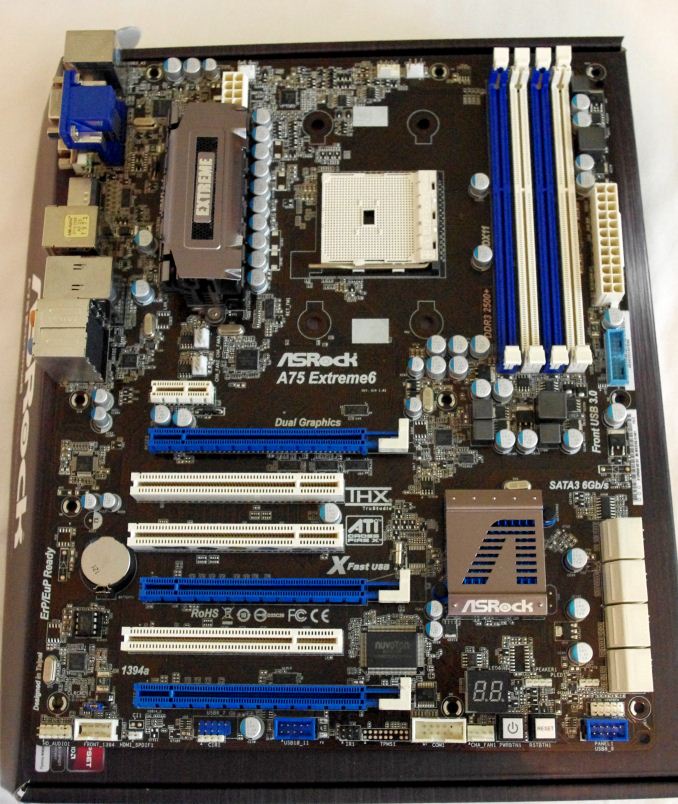
Llano throws a little oddball into the mix, being a true quad core unlike Trinity. The A75-UD4H from Gigabyte was the first one to hand, and offers two PCIe slots at x8/x8. Like the Core 2 Duo setup, we are not SLI enabled.
After finding an A8-3850 CPU as another comparison point for the A6-3650, I pulled out the A75 Extreme6, which offers three-way CFX as x8/x8 + x4 from the chipset as well as the configurations offered by the A75-UD4H.
For Trinity: The Gigabyte F2A85X-UP4
Technically A85X motherboards for Trinity support up to x8/x8 in Crossfire, but the F2A85X-UP4, like other high end A85X motherboards, implements four lanes from the chipset for 3-way AMD linking. Our initial showing on three-way via that chipset linking was not that great, and this review will help quantify this.
For AM3: The ASUS Crosshair V Formula
As the 990FX covers a lot of processor families, the safest place to sit would be on one of the top motherboards available. Technically the Formula-Z is newer and supports Vishera easier, but we have not had the Formula-Z in to test, and the basic Formula was still able to run an FX-8350 as long as we kept the VRMs cool as a cucumber. The CVF offers up to three-way CFX and SLI testing (x16/x8/x8).
The Memory
Our good friends at G.Skill are putting their best foot forward in supplying us with high end kits to test. The issue with the memory is more dependent on what the motherboard will support – in order to keep testing consistent, no overclocks were performed. This meant that boards and BIOSes limited to a certain DRAM multiplier were set at the maximum multiplier possible. In order to keep things fairer overall, the modules were adjusted for tighter timings. All of this is noted in our final setup lists.
Our main memory testing kit is our trusty G.Skill 4x4GB DDR3-2400 RipjawsX kit which has been part of our motherboard testing for over twelve months. For times when we had two systems being tested side by side, a G.Skill 4x4GB DDR3-2400 Trident X kit was also used.
For The Beast, which is one of the systems that has the issue with higher memory dividers, we pulled in a pair of tri-channel kits from X58 testing. These are high-end kits as well, currently discontinued as they tended to stop working with too much voltage. We have sets of 3x2GB OCZ Blade DDR3-2133 8-9-8 and 3x1GB Dominator GT DDR3-2000 7-8-7 for this purpose, which we ran at 1333 6-7-6 due to motherboard limitations at stock settings.
To end, our Core 2 Duo CPUs clearly gets their own DDR2 memory for completeness. This is a 2x2GB kit of OCZ DDR2-1033 5-6-6.


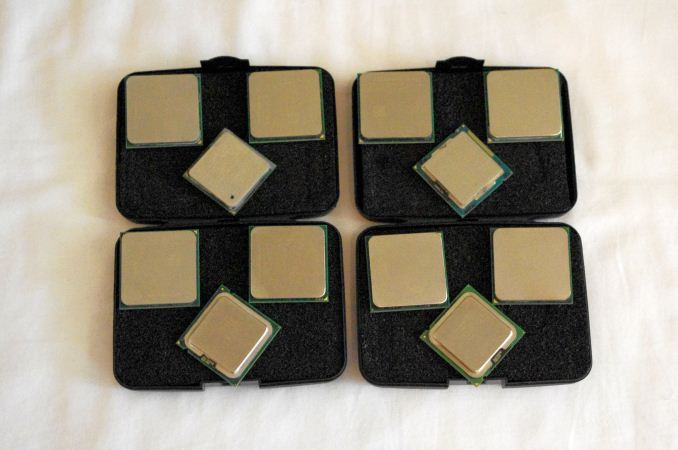
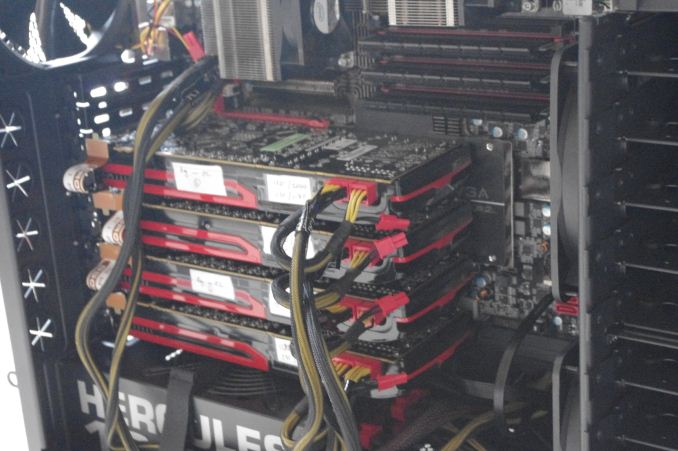
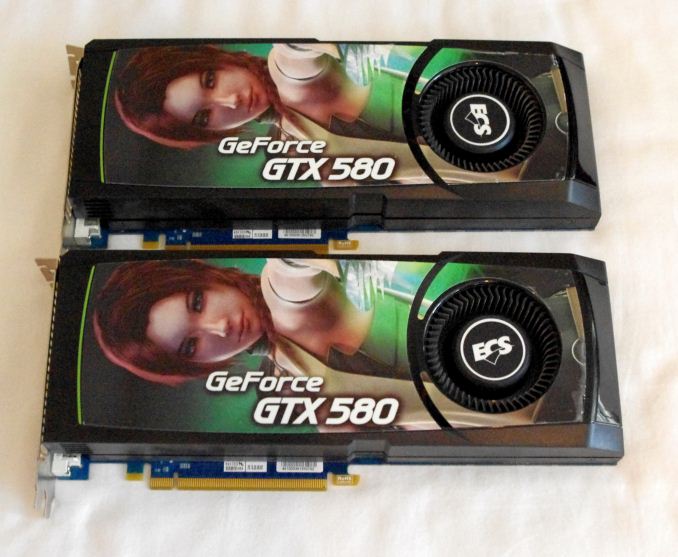
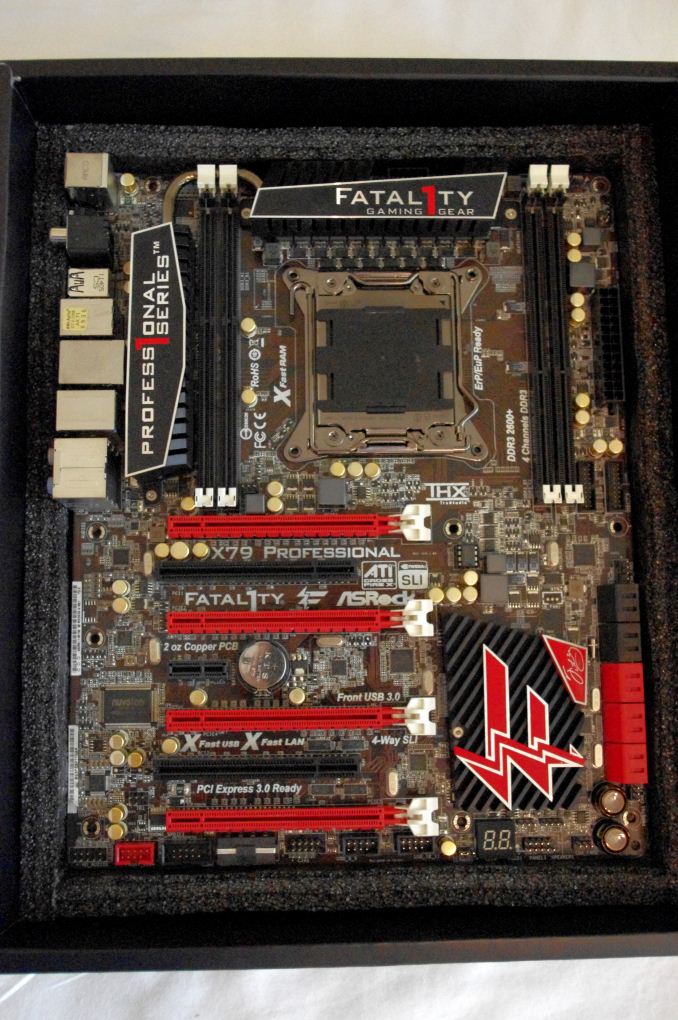
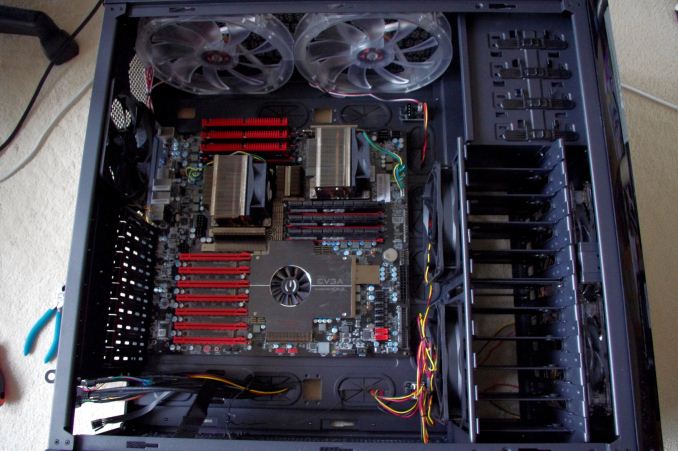
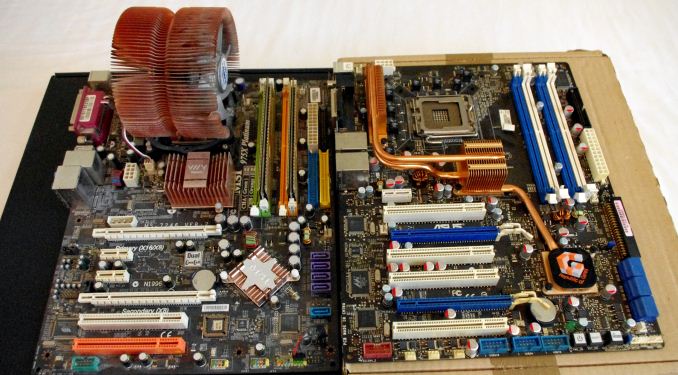
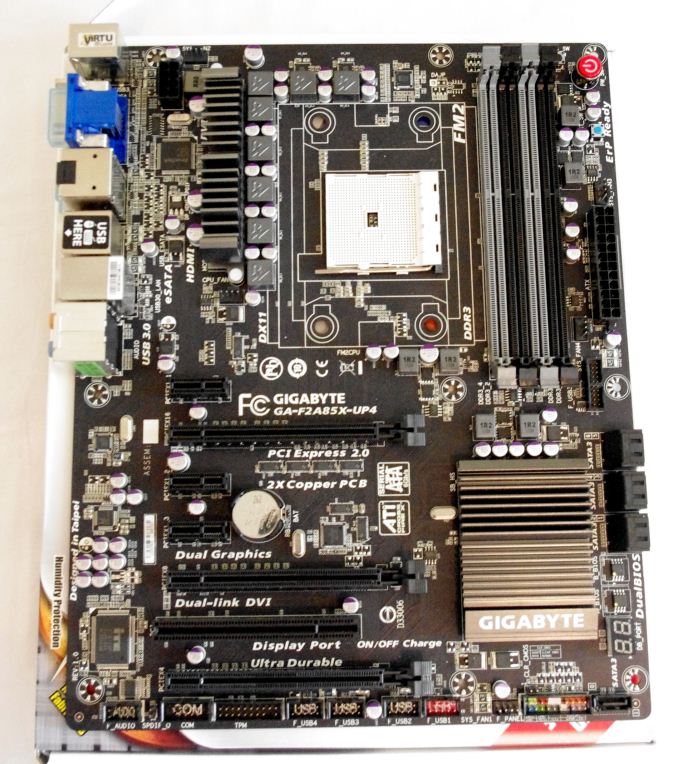
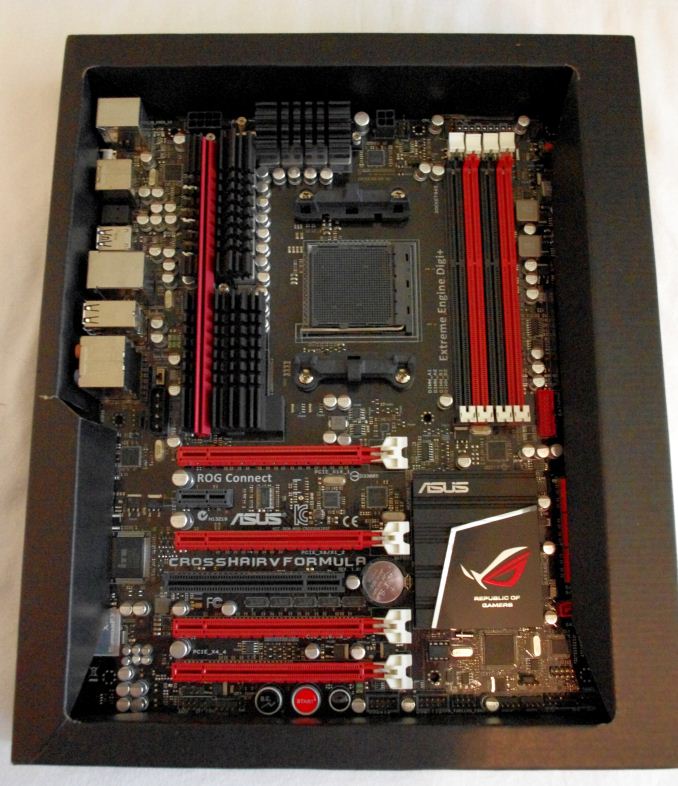

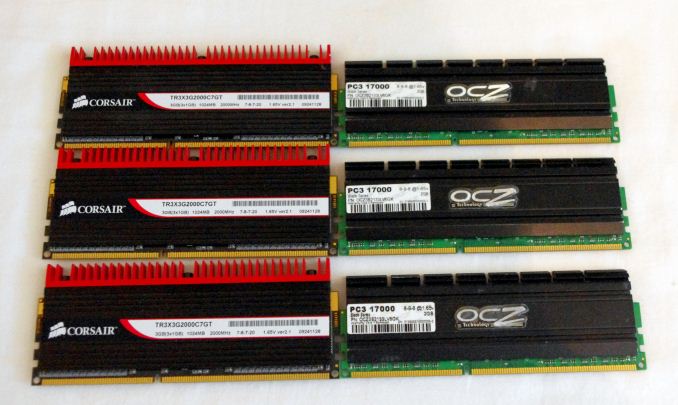
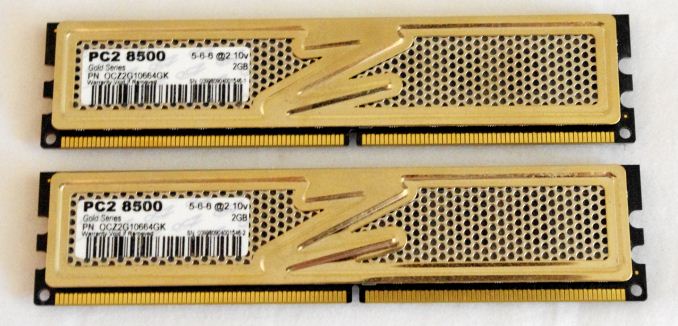








242 Comments
View All Comments
TheJian - Wednesday, May 15, 2013 - link
So you're agreeing with a guy that says it's OK to HATE someone but I'm the evil person for pointing out data that is incorrect? HATE? That's not a bit strong? "We might all hate this guy (for good reason)". And people are calling ME offensive? WOW. This reminds me of the gay people who claim to be tolerant, but god forbid any person says something against them (chic-fil-a comes to mind). They want that person tarred and feathered, smear them in the media and never work again, put them out of business, call them names, cheer people who commit violence against them etc...Nice...No double standards there. Another example, Stacy Dash voting for Romney. They called a BLACK woman who spoke her mind a RACIST...ROFL. What? They tore that chick apart merely for having a very well spoken (IMHO) opinion and pretty good reasons for saying them. She didn't sound stupid (despite what anyone thinks about her opinion), but they tarred and feathered her for saying something anti-obama... :( She's a very classy chick if you ask me and they still pick on her (saw some ripping on her on roku last week - msnbc or something).Not sure what his reason is anyway. Did I attack you guys personally? I even let Ian himself off the hook and left the problem at the doorstep of whoever is directing these articles to be written this way. What bothers me most is all the "great article" "nice job" comments to an article that is very wrong and advocates buying a very low end AMD cpu vs. Intel and says it's going to be ok. IT WON'T and in FAR more than just CIV 5 as I showed via other hardware sites.
What part wasn't objective? My data? The other websites giving the opposite of this site? I can't change their data, and there is nothing objective to discuss when the data is just patently wrong as proved.
People can argue I'm not objective on my console beliefs (though backed by sales data, and I freely admit I hate them...LOL but I own an xbox360/2 ps2's - go figure - I don't want another holding my games at 1080p for 8yrs) and the new gen at xmas may sell very well (we'll know in 9-10 months if they scan sell past xmas pop), but the PC comments and data I provided are facts based on data from steampowered's survey, hardocp, toms, and techreport. I could have went with another group also with pcper, guru3d etc...but too many links and this site says your post is spam.
If it was offensive they need thicker skin or stop writing stuff that other sites totally refute. These guys KNOW that when you drop it down to 1080p the cpu is going to SHOW rather than the gpu's shown here (which aren't as taxed at 1080p) showing any cpu can get the job done. Well yeah, any cpu but only when you push gpu's so far they beg for mercy. To me saying that stuff in the article is a LIE when they know what happens turning it down. I wouldn't be so harsh if they were just ignorant of the data, but Anandtech is NOT ignorant. They've been benchmarking the heck out of this crap for ~15 years (I think he started the year I started my 8yr PC business in '97!). I guess you can't call people out for what they're doing today without being called offensive, emotional (LOL) and not objective. I couldn't have written that post if they would have tested where 98% of us play at 1080p right?
What are they doing here at anandtech? Why would they do this? They know what steampowered shows, I basically said the same stuff to Ryan in the 660TI article ages ago but with even MORE proof and using his own articles to prove my points. I used HIS benchmarks.
Ask yourself why we are still waiting for the FCAT articles (now we're up to 2 or more...part 2 of the first, and 7990 data etc)? Ryan said we'd see them in a week. We are into months now.
http://www.anandtech.com/show/6862/fcat-the-evolut...
Where's part2? He still hasn't given us ONE ounce of data using it.
"In part one of our series on FCAT, today we will be taking a high-level overview of FCAT. How it works, why it’s different from FRAPS, and why we are so excited about this tool. Meanwhile next week will see the release of part two of our series, in which we’ll dive into our FCAT results, utilizing FCAT to its full extent to look at where FCAT sees stuttering and under what conditions."
That's from his Part1 linked above. How long do we wait?
Just for kicks:
http://www.anandtech.com/show/6910/origin-genesis-...
"Overall anything short of 5760 with 4x MSAA fails to make a 3rd Titan worthwhile. On the other hand, you do need at least 2 Titans to handle MSAA even at 2560"
Ok, so I need to spend $2000 on two titans to handle some MSAA at 2560 OVERALL in the tested games (heck one hits under 30fps in a game he tested at 1080p in that review). Raise your hand if you think IAN's article is correct...ROFL.
"In three of our games, having a single GPU make almost no difference to what CPU performs the best. "
Yeah in a res that according to Ryan's article taps out two $1000 titans...Then you're right. All cpu's are the same because the Titans are crying for some relief :)
Their recommendation here:
"A CPU for Single GPU Gaming: A8-5600K + Core Parking updates"
"The A8-5600K will also overclock a little, giving a boost, and comes in at a stout $110, meaning that some of those $$$ can go towards a beefier GPU or an SSD."
No way...So you'll buy $110 cpu and according to Ryan's article on the titan box, buy $2000 worth of titans to go with it to run at the resolution Anandtech thinks is important (2560x1440).
How do I respond to that without being offensive? You should hear what I'm saying in my brain right now...ROFL. The sad part is people are reading reviews like this and thinking it's correct. Look at the first comments on this article "nice work" etc...Really? I don't see a bunch of HATERS on my comments anyway. Just a few who at the least 1/2 agree with what I said ;) Yourself included. Your example proves to some degree, I didn't waste my time.
Sorry if you think my "truth" was hidden. I was attempting to make it more "in your face" for simplicity sake. Maybe I failed a bit...LOL. Can't please everyone I guess.
TheJian - Tuesday, May 14, 2013 - link
Nice...What reason? I defamed a hero of yours? Are they doing you any favors by hiding reality? Can you say after reading the links the other sites are wrong? The point of the links showing the exact opposite of this site is so you JUDGE Anandtech yourselves. I really don't want one of my favorite sites to go away. I just want them to start reporting FACTS as they are without the snow.I don't feel I have to be politically correct all day for that. People need to get over that PC garbage and get thicker skins. We are FAR to sensitive today. It's like nobody can take a criticism these days and the person who gives it is evil...LOL.
For the sake of your PC purchase, if you intend on buying on their advice, read the links I gave guys. I'm trying to save people from getting burned! Like me or hate me, the data does NOT lie. You just have to look at it and judge for yourself. When one cpu scores 58 vs. another at 108, there is a SERIOUS reason to pick the proper cpu (just one example from above). If you're seriously broke, I'm all for AMD at that point (great integrated with richland probably making a pretty decent experience), but if not...INTEL. But in either case I wouldn't buy EITHER now. Wait for haswell (broadwell goes in it later...important maybe) or Richland which really makes low end gaming possibly pretty fun I think (at least you can play that is). In laptops maybe Haswell with GT3e makes sense as it should get near AMD or blow by them with 128mb in there. But that's not going to desktops. Integrated on desktops from Intel is still useless IMHO and won't affect Discrete sales one bit from AMD or NV.
tential - Tuesday, May 14, 2013 - link
I don't agree with your analysis on consoles but everything else sure. Gaming for 98% of people is 1080p. That's why I laugh when people quote Titan on ANYTHING (which happens surprisingly a lot here). No one has a Titan so why even talk about such a card saying "AMD has no answer for it". Well no one even has the card anyway except for a couple of people. I agree also with the resolution thing. It makes no sense that so many reviews are catered to high resolution and mutli monitor setups.at?People have been wondering why NV and AMD have increased top of the line GFX cards and it's because quite simply, few people have everything needed to exploit such cards. I'd get a 7970, but I don't have a multimonitor setup or a high resolution monitor so what's the point?
Console wise I think the WiiU was a bad for any comparison. It was an upgrade that really brought nothing extra. People who have a Wii don't care about graphics so most of the upgrades of the WiiU are meaningless to Wii owners. The new Xbox and PS4 will be much better in terms of sales.Those console gamers have been dying for a graphics boost.
In the end though you're response explains to me GPU pricing today and why top of the line GPUs are costing more and more. A smaller percentage of people are buying them, because GPUs that are lower end, or GPUs that are older are perfectly capable of doing the tasks needed by gamers today. Maybe when monitors drop in price and more people game at higher resolutions but for now, most people do 1080p, and that's the sweet spot for most people. I know thats the ONLY resolution I ever look and care about.
TheJian - Wednesday, May 15, 2013 - link
Thanks...Console arguments are like ford vs. chevy right? How many people won that argument back in the day? :)If consoles sales after xmas pop continue for 6 months after (unlike wiiu etc that died as Kotick etc point to, wiiu off 50% says something, Vita, 3DS etc down from last revs too, software off also for all), I'll come back and say YOU sir were right :) You have my word. Of course it goes without saying, I'll be saying the exact opposite if it doesn't happen.
Regarding why we need more power...I can show situations where 1080P brought the top end to unplayable. Hardocp just did this.
http://hardocp.com/article/2013/03/12/crysis_3_vid...
They had to turn some settings down even on 680 and 7970ghz and cards below this really turned stuff off (670 etc). People can say, well this or that doesn't make much difference visually, but the point is you can't have everything on without more power (maxwell/volcano should finally make everything on 1080p playable with ALL details on, no sacrifice at all in anything I'd hope).
"Crysis 3 plays a lot better at 1080p resolution, 1920x1080. At 1080p the GeForce GTX 680 and Radeon HD 7970 GHz Edition are able to push the graphics to very high and play with the best experience possible in the game. Granted, we have to use SMAA Medium in order to achieve this. It will most likely take next generation single-GPU video cards to allow us to play at SMAA High 4X at very high at 1080p."
Tombraider has the same issues only worse I guess. :
http://hardocp.com/article/2013/03/20/tomb_raider_...
"If you are interested in playing Tomb Raider the NVIDIA GeForce GTX 680 provided the fastest performance at 1080p, and was the only single GPU video card capable of playing with 2X SSAA at this resolution. At 2560x1600 the AMD Radeon HD 7970 GHz Edition CrossFire setup will provide more performance. For gaming on a budget, or at resolutions lower than 1080p, the GeForce GTX 660 Ti is an excellent option."
So the 660TI I almost bought is for LOWER than 1080p?...ROFL. OUCH. As they point out two cards for above 1080p and only the 680 survived 1080p itself, and only at 2xSSAA. I can site more examples also, but this makes the point. Even 1080p is tough for top end cards if gaming as the devs intended with all candy on is attempted. We need more power, and 20nm should give this from either company I hope. I hope I'll have enough of a reason to buy 1440p for a few games, then flop it over to my dell 1920x1200 when the new cards can't hack my 27in I plan to buy (if I do, might stick with 27in at 1080p, but I like having 2 resolutions native on the desk to play whichever my card can handle). It's comic ryan was pussing 1440p for the 660TI article, but hardocp says that card is for BELOW 1080p...LOL.
ShieTar - Monday, May 13, 2013 - link
Well, if even older dual core CPUs and the weaker AMD parts don't scale at all with a single GPU, it would seem to me like a 60$ Pentium or even a 40$ Celeron with a bit below 3GHz might make a great companion for the typical a 200$-GPU for a Full-HD Gamer. Would be interesting to add any one of those low-cost Ivy Bridge parts to the comparison to see how they keep up with their core ix counterparts.trajan2448 - Tuesday, May 14, 2013 - link
As soon as I saw Crossfire I stopped reading.TheJian - Wednesday, May 15, 2013 - link
One more comment on FCAT missing - From the 7990 review:" The end result is that we’re not going to have FCAT data for today’s launch, as there simply hasn’t been enough time to put it together. FCAT was specifically designed for multi-GPU testing so this is an ideal use case for it and we’d otherwise like to have it, but without complete results it’s not very useful. Sorry guys.
The good news is that this means we have (and will be compiling) FCAT results for our cards based on the very latest drivers. So we’ll get to the bottom of frame pacing on the 7990, GTX 690, and more with an FCAT article later this week or early next week. So please stay tuned for that."
So we're 3 weeks later and no review for this data STILL. Again, people realize the delay tactics here. In another week it will be a MONTH. This is on top of already waiting for FCAT part2 article I mentioned already.
"Our goal with FCAT was to run an in-depth article about it shortly before the launch of the 7990 as a preparatory article for today’s launch. However like most ambitious goals, that hasn’t panned out."
It's not really ambitious when EVERYBODY else is already presenting data article after article. Just keep making excuses. Take a good look at the credibility of this site here people and judge these guys yourselves. Ryan Shrout seems to be able to pump out article after article on FCAT, including his review for the 7990, Titan etc...Every article discusses it at this point. Is Ryan Shrout at PCper.com so much more effective than this huge website? Ryan's asking for donations to upgrade his camera equipment for recording podcast type stuff etc. How many people do you have working here compared to his little site? Which I love BTW. Great site, and he nearly has doubled the funding the asked for :)
At some point I hope people start asking you guys more questions after looking at my posts pointing out stuff most just seem to miss. People will eventually JUDGE this site accordingly if you keep this stuff up. I sincerely hope this site returns to good neutral data soon. You can start with an FCAT article that makes other sites like PCper seem as small as they are.
Are you still trying to figure out how to use it or something? Call Ryan Shrout :)
bds71 - Wednesday, May 15, 2013 - link
Ian: i noticed you were GPU bound a lot. doesn't this sort of defeat the test? (i think you were GPU bound more than 50% of the time). i'm curious why you didn't use eye-finity or nVidia surround to test the quad graphics setup? with that much power under the hood it's almost a necessity. anyway, i don't mean to critisize the review, i think it still had some very usefull information. i just think that the conclusion wasn't complete if you're GPU bound. note: and decreasing the graphics so that your CPU bound is unrealistic - nobody with quad graphics is going to reduce the graphics capability so their CPU bound.bds71 - Wednesday, May 15, 2013 - link
edit: i just read through (most) of the comments above. and, while 98% (doubtful, but OK) may play on a single 1080p screen, the fact is that high end graphics are a waste of money for a single 1080p monitor. and, while some games (like Skyrim and Civ V) use a lot of processor, that type of scenario is not indicative of most games. note: also, most of those 98% single screen 1080p users also probably DON'T have a top-of-the-line (ie: 980 or 7970, much less titan, 690 or 7990) graphics card. they probably have a 200-$300 graphics card and a 100-$250 CPU (ie: mainstream). nor do any of those less than top-of-the-line *need* anything more than single 1080p monitor and a mid-range CPU (of which the AMD or Intel variety will do just fine for 98% of those 98% with a single monitor) from my point of view this article set out to find out how much the CPU is used in gaming. does it make sense then to put a limit on the graphics capabilities? of course not. so you go with the high end (top-of-the-line) graphics solution. but in the end, the graphics capabilities was still limited by the screen resolution - you couldn't really see what the GPU's were/are capable of because they couldn't really stretch their leggs (and, in turn, the CPUs never stretched to their limits to feed such a request).i participate in F@H. as such i also use my GPU's. i've noticed that (depending on the work unit) the GPU's can take as much as 20% of the CPU to keep them fed. is gaming really that much different? the CPU is needed to feed the GPU, and to do those functions that can not be done on the GPU. for folding, it doesn't matter how fast something gets done - so a faster CPU isn't imperative. but, for gaming, the speed of CPU and its ability to keep relevant data going to the GPU does matter. when the CPU can't keep up with the GPU you get slow minimum frame rates and a general "slow" feeling from the game. so, yes, i agree minimum frame rates are important when determining what CPU to use when feeding a high end graphics solution (more so when using more than a single GPU solution). but you still have to let the GPU's stretch thier legs to see how much of the CPU is being used - and that will determine if a CPU is good or not (min frame rates and CPU usage with high end graphics at appropriate resolutions)
yhselp - Wednesday, May 15, 2013 - link
Wow, the sheer amount of 'content' that Jian guy is producing is amazing. You could probably publish a few books worth of comments by now. Is it really necessary to hit everybody up with a 1000-word reply?What I don't get is why you actually do this. You don't agree with what's been tested and how the data has been interpreted; okay, that is your right. And, yes, some of the conclusions drawn might be controversial; but what's your problem? Why don't you just voice your opinion once and leave it be? What are you doing here - are you some sort of freedom fighter for objective data on the internet?
You complain about how AnandTech are doing it wrong and claim that your own observations are objective and valid. From your point of view they might be, but what you are forgetting is that testing hardware is so vast a field, with so many variables that it's impossible to scientifically claim that ANY conclusion is objective, since the very essence of what you're dealing with precludes that. Everything (in hardware testing) is subjective - live with that truth.
It's not about having "tough skin", but having manners and being civilized. You can't expect people to listen to you and take you seriously if you're being rude even if your arguments are valid. Try a more gentle approach - I guarantee your message, whatever it might be, will travel further.
Remember, this is not an article about choosing a CPU for 1080p gaming, also, it's not complete. The provides information for people to interpret their own way. Yes, it draws conclusions at the end that I too think are best left unsaid; but why can't you just look past them? What is your problem? What are you trying to change here? If you don't like AnandTech so much, why don't you just... leave?